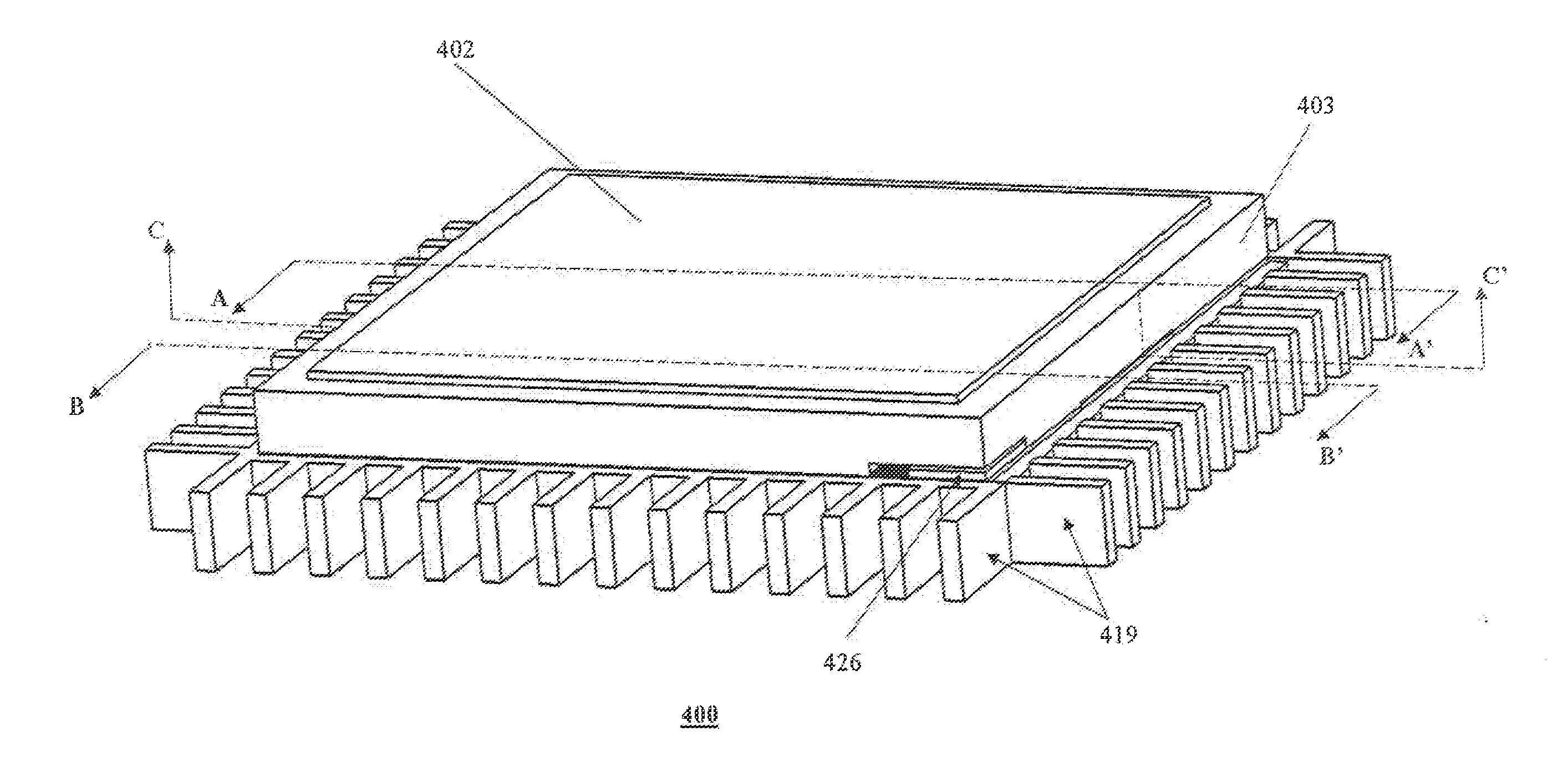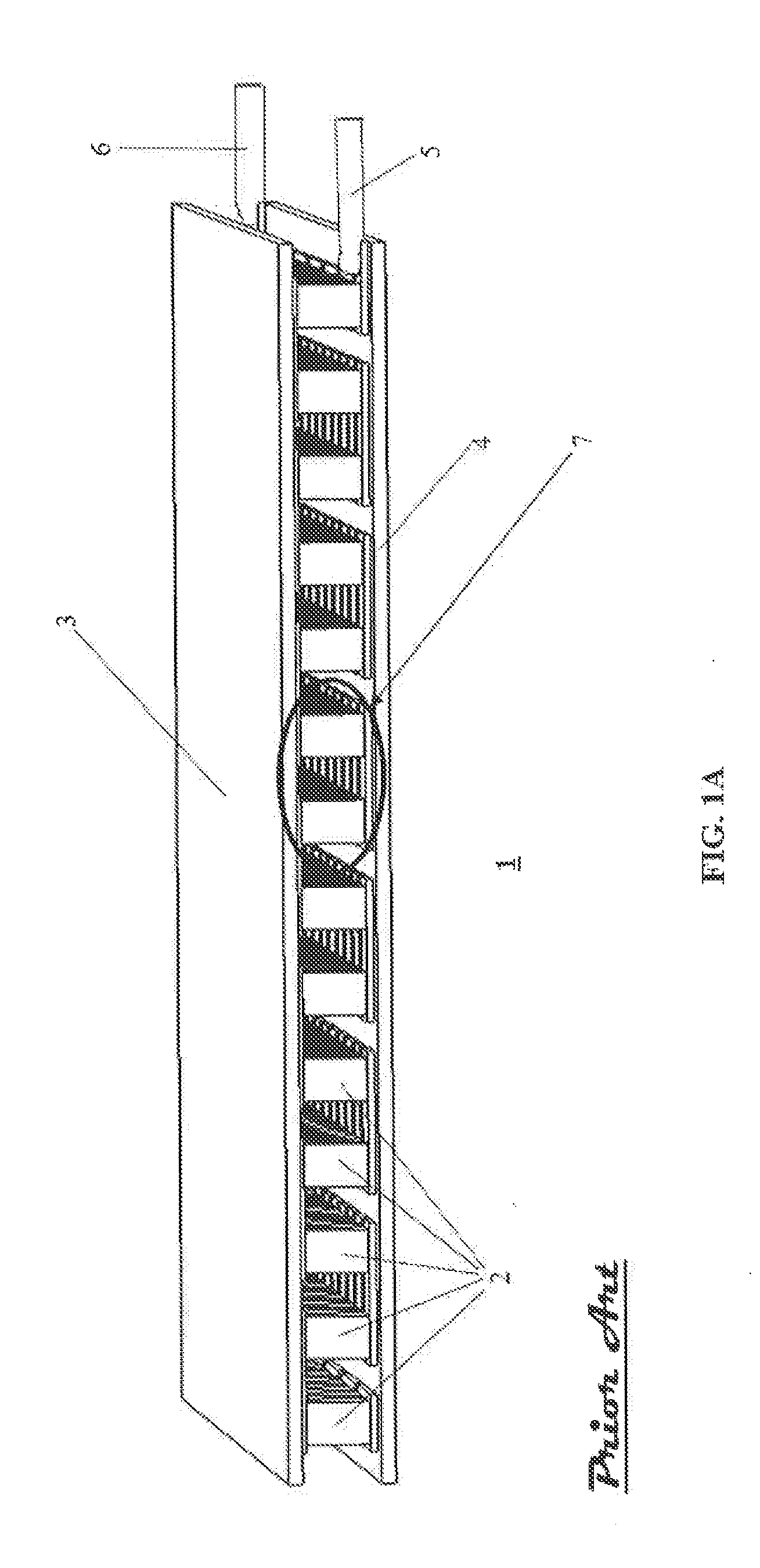Fully integrated thermoelectric devices and their application to aerospace de-icing systems
a fully integrated, thermoelectric module technology, applied in the manufacture/treatment of thermoelectric devices, lighting and heating apparatus, machine operation modes, etc., can solve the problems of limited prior art embodiments to niche applications, limited thermoelectric efficiencies, and high cost, so as to improve thermoelectric efficiencies, improve efficiency, and reduce the effect of thermal load
- Summary
- Abstract
- Description
- Claims
- Application Information
AI Technical Summary
Benefits of technology
Problems solved by technology
Method used
Image
Examples
Embodiment Construction
[0097]This application incorporates by reference all matter contained in de Rochemont and Farmer, “METAL-CERAMIC COMPOSITES WITH IMPROVED INTERFACIAL PROPERTIES AND METHODS TO MAKE SUCH COMPOSITES”, U.S. Pat No. 5,866,252 (the '252 application), de Rochemont and Farmer, “CERAMIC COMPOSITES WITH IMPROVED INTERFACIAL PROPERTIES AND METHODS TO MAKE SUCH COMPOSITES”, U.S. Pat. No. 6,143,432 (the '432 application), de Rochemont and Farmer, “Ceramic Composite Wiring, Structures for Semiconductor Devices and Method of Manufacture”, U.S. Pat. No. 6,323,549 B1, (the '549 application), de Rochemont U.S. Pat. No. 7,405,698 entitled “CERAMIC ANTENNA MODULE AND METHODS OF MANUFACTURE THEREOF” (the '698 application), de Rochemont U.S. Pat. No. 8,178,457 B2 entitled “CERAMIC ANTENNA MODULE AND METHODS OF MANUFACTURE”, (the '457 application, de Rochemont U.S. Ser. No. 11 / 479,159, filed Jun. 30, 2006, entitled “ELECTRICAL COMPONENT AND METHOD OF MANUFACTURE” (the '159 application), U.S. Ser. No. 11 / ...
PUM
 Login to View More
Login to View More Abstract
Description
Claims
Application Information
 Login to View More
Login to View More - R&D
- Intellectual Property
- Life Sciences
- Materials
- Tech Scout
- Unparalleled Data Quality
- Higher Quality Content
- 60% Fewer Hallucinations
Browse by: Latest US Patents, China's latest patents, Technical Efficacy Thesaurus, Application Domain, Technology Topic, Popular Technical Reports.
© 2025 PatSnap. All rights reserved.Legal|Privacy policy|Modern Slavery Act Transparency Statement|Sitemap|About US| Contact US: help@patsnap.com



